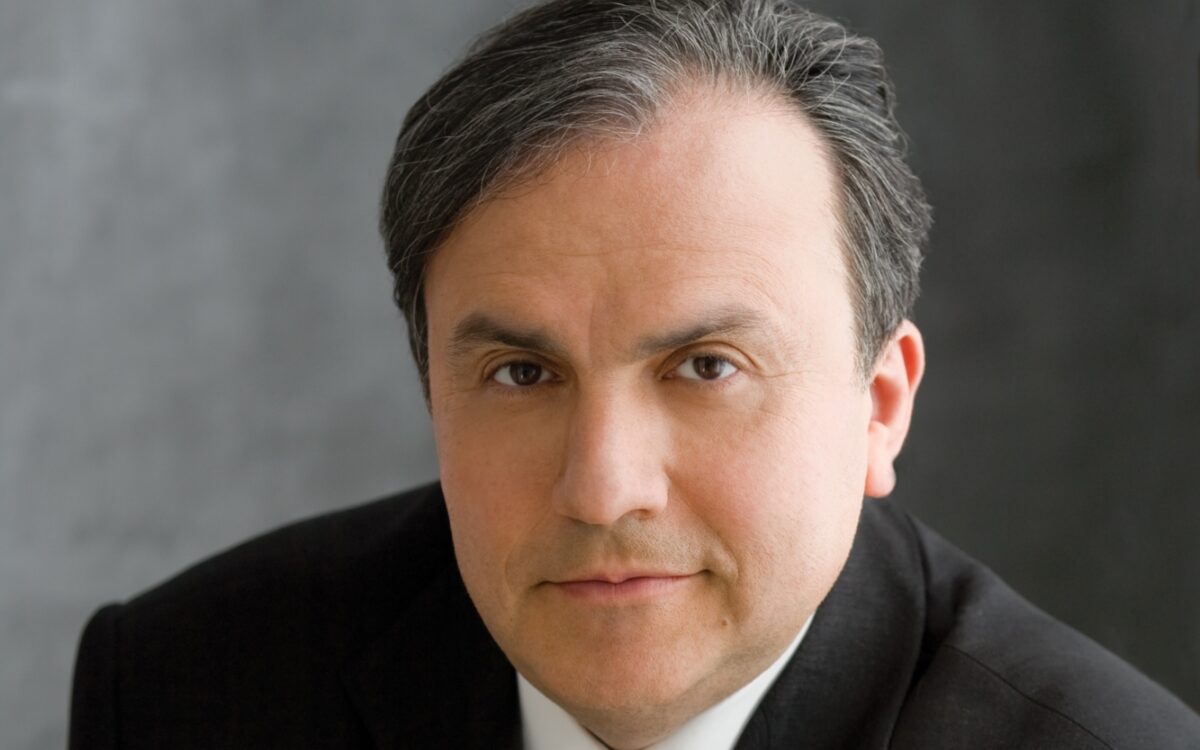Prometheus, Poem of Fire, for piano, chorus, and orchestra, Opus 60
Composition and premiere: Scriabin began Prometheus, Poem of Fire (also known as Symphony No. 5) in 1908 and completed it in 1910. Serge Koussevitzky led the premiere, with Scriabin as soloist, in the Great Hall of the Assembly of the Nobility in Moscow on March 2, 1911. BSO performances: Koussevitzky led Prometheus in his first season as Boston Symphony Orchestra conductor on several occasions in March, April, and May 1925 with soloist Alexander Steinert and the Cecilia Society Chorus at Boston’s Symphony Hall and New York City’s Carnegie Hall. First Tanglewood performance: July 26, 2024, BSO, Andris Nelsons conducting, with piano soloist Yefim Bronfman and the Tanglewood Festival Chorus, James Burton, conductor.
For Serge Koussevitzky, Scriabin’s massive, mystical and mythical Prometheus marked a milestone in music history, nothing less than “a fact of history.” In preparation for its 1911 Moscow premiere, Koussevitzky spared no expense or effort in coordinating the required enormous forces (gigantic orchestra with extra brass and percussion, piano solo, chorus). He even ordered the construction of a new instrument to sound the pealing bells for the ecstatic finale. Fourteen years later, during his first season as music director of the Boston Symphony (1924-25), he again presented Prometheus, demonstrating at the start of his long tenure at the orchestra’s helm that he would challenge his audience with innovative and ambitious fare.
But missing from both of these early performances was the most innovative element of Scriabin’s vision: constantly changing colored lighting effects accompanying the music, executed by a color keyboard (tastiera per luce). Scriabin’s futuristic conception of Prometheus—“a spectacular ‘dual symphony’ of light and sound”—exceeded what was technically feasible in 1911, and even for many years afterwards. Moreover, the first published score contained no detail about how the lighting effects were to be achieved and coordinated with the music. In 1913, Scriabin prepared a new score with more precise instructions. That edition remained unpublished, but was rediscovered in 1978 and served as the basis for a new definitive version of Prometheus created by Scriabin scholar Anna Gawboy and lighting designer Justin Townsend. This was first realized by the Yale Symphony Orchestra at Yale’s Woolsey Hall in 2010.
The story of Prometheus, giver of fire, has inspired scores of intellectuals and creative artists (Liszt, Beethoven, Goethe among them) ever since Greek poet Hesiod first recorded it around 800 B.C.E. One of the Titans in Greek mythology, Prometheus defied the Olympian gods by stealing fire from them and giving it to humans; it’s taken as a symbol of enlightenment, progress, and creativity. For his transgression, Prometheus was bound to a rock, where every day an eagle (symbolizing Zeus, king of the gods) pecked out his liver, which would then regrow, leading to a ceaseless round of torment.
For Scriabin, Prometheus was a powerful symbol of his long-held philosophical and spiritual belief in the power of man’s free will. “The fire is light, life, struggle, increase, abundance, thought,” he wrote. Originally, Prometheus was to be part of a larger project, the Mysterium, Scriabin’s crowning achievement, encompassing a vision of “apocalyptic ecstasy and the end of the world,” but he died before realizing it.
Prometheus moves from the primeval condition of the world, at the murky birth of time, to a deafening climax—an apocalyptic vision in blue flame. The piece combines several different types of work: a tone poem for large orchestral forces; a piano concerto; a cantata for wordless chorus, and a symphony of light. A sustained opening six-note chord (the “mystic chord”) structured in stacked intervals of augmented, diminished, and perfect fourths (A-D#, G-C#, F#-B) depicts the impenetrable world of Original Chaos and serves as the source of harmony and thematic material throughout.
The first dreamy theme of the “creative principle” slowly emerges in the horns, followed by the heroic “theme of free will,” announced by the trumpets and flutes in a fiery salute answered by the piano. The dominant ascending main theme, the “Dawn of Human Consciousness,” follows. In the development section the various themes collide in kaleidoscopic, explosive fragments, like atoms in a smasher. As in many of Scriabin’s works for piano, trills represent sexual ecstasy, amplified by the sparkling, celestial sounds of two harps, triangle, bells, and celesta.
As Prometheus progresses, the music grows in intensity and volume like rising flames, building towards a thrilling climax of complete “ecstatic possession” with the orgasmic entry of the chorus (robed in white along with the audience in Scriabin’s original vision), organ, and chimes. The last marking in the score, dans un vertige (“in a state of vertigo”) takes us into a world of cosmic Nirvana, where the themes explode into a massive conflagration.
In the 1913 score, Scriabin provided instructions for achieving the lighting effects in two lines at the top. The upper line denotes the root of the harmony, and changes constantly, with a color corresponding to the harmonic ‘tonic’ at any given moment according to a complex and personal schema (e.g, C=red, G=orange, etc.). Beginning in Scriabin’s own era, the piece has been most frequently presented without the lighting component, as it is this evening. Of the many attempts to realize Scriabin’s vision over the past century, Anna Gawboy’s is the most intensively researched; even so, the result is only an approximation of Scriabin’s intentions. Scriabin’s grandiose vision of Prometheus was, Dr. Gawboy concludes, “no mere sound and light show, but rather something else entirely—a work of art that would change the world as we know it.”
HARLOW ROBINSON
Harlow Robinson is an author, lecturer, and Matthews Distinguished University Professor of History, Emeritus, at Northeastern University. His books include Sergei Prokofiev: A Biography and Russians in Hollywood, Hollywood’s Russians. He has contributed essays and reviews to the Boston Globe, New York Times, Los Angeles Times, Symphony, Musical America, and Opera News, and program essays to the Boston Symphony Orchestra, Los Angeles Philharmonic, New York Philharmonic, Aspen Music Festival, and Metropolitan Opera.

